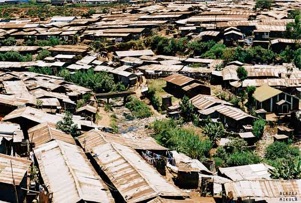kenyaView







Problems of Kenya: Population
The population of Kenya now is about 37 million; at independence from Britain in 1963 it was about 8 million. This increased to 11,000,000 in 1970. A further increase of 46% brought this to 16,000,000 in 1980; plus 36% to 22,000,000 in 1987; another plus 24% to about 27,000,000 in 1995; and a further 37% to today's 37,000,000.
Kenya may seem thinly populated when travelling on the road to Amboseli from Nairobi, for example, but it is actually heavily populated in relation to its carrying capacity. Kenya as a whole has 59 people per square kilometre, the same as Ireland. The US has 31 people per sq.km, Canada 3, and the UK 246.
Approximately three million people live in Nairobi, the capital city, where the Kibera slum, which holds people driven off the land by the deaths of their animals, or by warfare, or simply by hopes for better things in the big city, is said to be the biggest in Africa with 1,000,000 people.
Seventy-five per cent of Kenya's population is concentrated in Nairobi and the high-potential agricultural belt which runs north-west through Nakuru to Lake Victoria and the Ugandan border. This belt forms only 10 per cent of the country's total land area of 580,367 sq. km. Most of the remaining area is either arid or semi-arid and is sparsely populated. In this heavily populated ten per cent, the population density is about 452 people per sq.km. Japan has 339 and India 336 people per sq. km.

Kibera slum district in Nairobi
Picture taken by: Blazej Mikula From: Wikipedia
Although AIDS has reduced life expectancy from 59 years in the 1980s to 53 in 2007, and the number of children born to each woman has declined from 8.1 in the late 1960s to 5.4 today, 42% of the population is under 15, and only 2% over 65. The UN estimates the population will increase to 65 million by 2050. It is difficult to imagine what sort of a country Kenya would be under these conditions.
Source: Population Reference Bureau